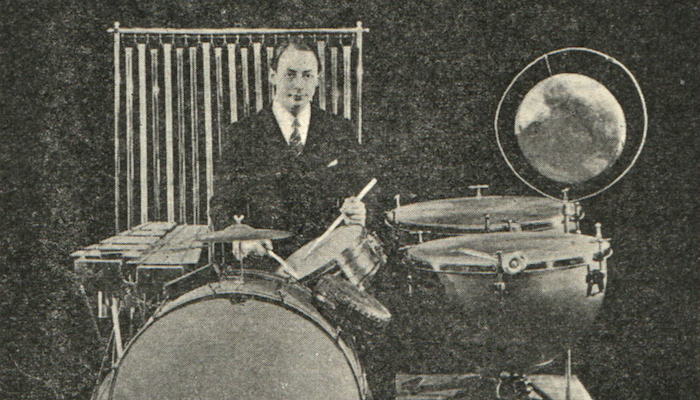
Does equipment matter?
I think it does, but I'm not talking about DJ equipment. I'm talking about the band.
First, a note of explanation. Christian has generously invited me to contribute something to this page. I do DJ, but I do not consider myself to be any sort of expert on the subject.
I do know a bit about music and history, though, and I'm always trying to figure out better ways to talk about the aspects of swing music which are so important but which almost impossible to find words for.
So, I'm going to talk about something a bit philosophical, but related to DJing.
New Cymbal Types
I recently attended a workshop given by Glenn Crytzer. He had a lot to teach, but there was one thing he said that seemed like a revelation to me. He kept talking about ride cymbals. He said that he could judge a band without hearing them, just by looking at their cymbals.
When he said this, I immediately realized what he was talking about, but I had never had the vocabulary to say what it was.
Before be-bop, cymbals were smaller and thinner. They did not have such a sustained sound. Modern drummers often use cymbals of a type which did not exist in the swing era. These have a sustained, ringing, sizzling sound.
Does it Matter?
So, is Glenn just insisting on some purist idea of authenticity? No, I don't think so. A sustained sound like a modern ride cymbal does not give a dancer the same kind of rhythmic pulse. The old cymbals, with their less sustained sound, gave a more defined beat.
I'm not saying the modern sound is always wrong, or that it can't swing, and I'm definitely not defining what is or isn't swing music… but these new tools give a different kind of rhythm and sound. This marks the music as modern.
Not Just Instruments
These kinds of problems come up with modern recording techniques as well. Standard practice today is to “close mic” each instrument. This creates a very different sound compared to old recordings where the musicians would have been standing quite a distance from the mic.
Part of this difference is a result of the microphone itself, and part of it is because the close mic-ed musician doesn't have to play as loud.
When you play a horn at a high volume, it isn't just louder, it has a different tone. (Pee Wee Erwin claimed that Bunny Berigan was 30 feet from the microphone when he recorded “Marie.” To create the tone that he did, he had to play loud!)
Processing Changes Rhythms
Another tendency is to add reverb to modern recordings. This ability did not exist in the swing era. Why does it matter? Well, rhythm is not just when a note begins, it is also when and how a note ends.
Adding reverb blurs the end of the note. This matters in music where rhythm is practically everything. It makes the rhythm less distinct. Not all modern recordings use these techniques, and I think more and more bands are taking great care about choosing which ones are appropriate.
What Should I Do About It?
Does this matter to a DJ? I think it does, but I'm not suggesting some kind of rule. Good DJs listen to each song and make a decision about how it will work for dancing.
There is a lot to it, and none of it (except BPMs) can be quantified. So I don't think it's necessary to know all of this; your ears will tell you. But I still think it's interesting to try to understand why we find one song irresistible to dance to and another… not.
Personally, I don't play any songs with this modern cymbal sound– not because I'm such a purist, but because they just don't make me want to dance. They make me want to relax and have a drink. That feeling is the way I decide, not something technical.
DJs, what do you think?
Do you hear these differences as significant, or am I making a lot out of nothing? Do you find it jarring when very modern-sounding recordings are juxtaposed with old ones? Or is it a welcome bit of variety? Do you use this contrast consciously in your DJ sets?

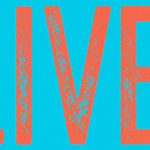
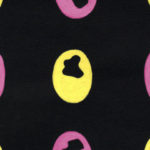
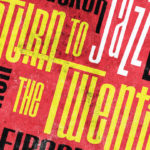
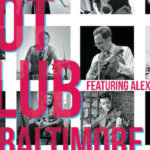
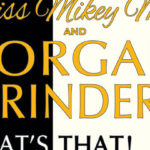
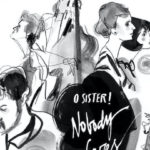
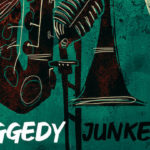

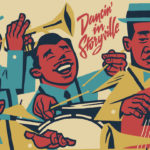
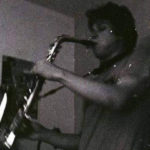
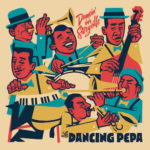

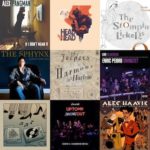
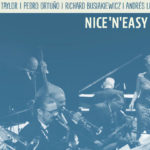
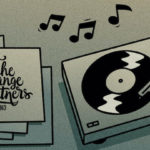
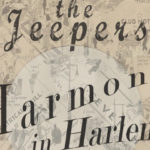
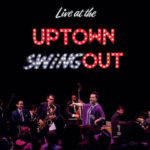
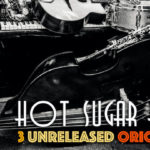
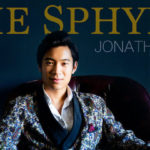
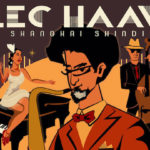
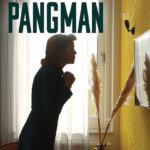

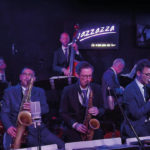
Hey! good opening salvo. I also heard that quotable quote from Glenn Crytzer: “The ride cymbal killed swing music,” (or something close to that.) I am in general agreement with the idea that keeping time on a ride cymbal is different than keeping time with a rhythm section possibly composed of string bass, the left hand of the pianist, and a rhythm guitar (but there are many other possible combinations.) And I, too, prefer the fuller sound of a rhythm section and think it swings more powerfully than a drummer “tinka-tinking” on a ride.
I also agree that the general cymbal sound was thinner and of shorter duration, but I don’t see it as necessarily being “more swinging” than a cymbal of greater heft and sustain. In the picture at the top of the article, Adrian has a wonderful picture of Vic Berton. Now, Vic is famous for lugging around those two tuned timpani drums there in the right of the photo. These are drums with tremendous sustain and also have the ability to alter pitch via a foot pedal. They are also huge and heavy. How do you imagine Ol’ Vic is gonna swing you a “four-on-the-floor” using those things? Also pictured is a gong. Practically the dictionary definition of sustain. The various “metalophones” like the tubular bells and that vibraphone (is that what that is or something similar?) will also ring a long tone unless it is dampened by a hand or via a foot pedal that actuates a dampening bar. In the foreground are a huge bass drum with a single cymbal mounted on top and a snare drum sitting on a floor stand at a rakish angle. I don’t know what is mounted on the bass drum to the left and right of the cymbal. Is it a wood block and a little tom-tom?
Okay, I will try to get to the point here. I think that the reason Vic had all this stuff, most especially the timpani, is that it allowed him to get a broad pallet of effects that help to define him as a musician. He’s like the musician of today with a lot of effects pedals to give him or her an identifiable signature sound or even a special sound to each individual song they play. He could get a short crash on the cymbal and choke it off right away with his hand, or give a big hit on a timpani and press down the foot pedal to get a long-sustained boom that rose and fell in pitch as that hit rang on and on, and many others in-between.
Many sounds and textures. This is what most of the drummers were into: lots of different things to bang on. This tendency gave us the term “trap-kit” because the drummer played a whole kit of “contraptions.” This variety of novel percussion sounds and textures was inspiring to the musicians, dancers, and listeners of that era and it continues to delight our ears when we hear those early jazz recordings today.
However, I don’t think these instruments were inherently “more swinging” than others. I mean, Vic’s timpani are symphonic instruments, fer cryin’ out loud! But it is a case of “It ain’t whatcha do it’s the way thatcha do it.” Vic could swing the timpani (or at the very least let the listener know who the drummer was on a recording.) I think all the musicians of that day were very tuned-in to the essence of swing rhythm (as undefinable as that is) and would play you exciting music on a old pot or an empty suitcase with whatever else they could find if that was all they had at hand to make music with. Case-in point, here is a link to a little “soundie” with Vic Berton playing his timpani and then really “tearing it up” on a piece of cloth: https://www.youtube.com/watch?v=2ykEJiq82q0
Wow! Great thoughts! And I love this clip. Another obscure jazz instrument I never knew about!
As for the kit… it’s a woodblock on on side, and an old-fashioned tom-tom on the other. Benji Bohannon in New Orleans uses a tom like that, and it’s amazing how much sound comes out of it. So cool.
I find this information extremely interesting and appreciate Adrian’s attitude that the technical doesn’t necessarily rule–that the bottom line is how danceable one feels the music is. However I also find Yukio’s perspective very interesting and the apparent contradiction of using a pic of Berton with his collection of long sustaining instruments.
I wish Adrian had included some examples of recordings with old and new cymbals to help clarify. It’s hard for me to grasp how a modern cymbal could over power the main rhythm of a stand up bass, the phrasing of vocals, horns & etc. Perhaps it is that the drummer is playing the actual swing beat on the ride and with a sustaining ride the swing doesn’t come through–that’s probably it.
Adrian do you happen to have an example of a song that was recorded with a vintage cymbal and a newer version with a modern ride? That would be glorious!
Danke
Nimbuzz, I replied with examples, but I think the post may need to be approved… If it doesn’t appear, I’ll do it again….
Ya, That ‘King Porter’ really makes your point. The constant ride ringing/clashing is un nerving and it’s very clear and relaxing to go back to the first vintage version. I’m surprised Goody Benman didn’t object–maybe his hearing was gone sour or he had stock in the cymbal mfg?
I would love to know the answer to that question… I have thought about it, but I have no answers…
Here is my theory: BG tried to evolve as an artist out of the swing arena where he made his name. He tried to play Be-Bop when swing was on the decline and Bop was what everyone wanted to play and hear. I am pretty sure that nobody was enthusiastic about the “change” in his style, but that is most likely where his band picked up the ride cymbal and just kept riding that thing even when they went back to playing swing. He probably thought, “That’s just the sound the kids of today want to hear.”
Good stuff here! Great examples on BGs “King Porter Stomp” versionsm Adrian. This kind of discussion is important for DJs because they choose a great deal of the music the rest of the Swing Dance Community hears. They are important “Tastemakers” of the scene. If we can identify what elements make for more fun and entertaining music and play more of that and less of the lesser quality stuff, the whole scene benefits from our work here.
I guess what I like about a lot of the sound of the vintage percussion instruments is that they make me smile. The short duration cymbal crash (that sounds like the cymbal is bent, cracked, or both) is like the punch line to a funny joke. Interesting sounds full of humor and surprise and sometimes mystery abound on these old recordings.
I found a youtube clip of one song that (for me) has Vic Berton’s signature timpani sound. (I am still pretty sure he did lug these things around with him all the time.) The song is called “Haunting Blues.” It has been chosen for at least one Halloween sampler because of the title, but I think it is “haunting” in a different sense– see what you think. Anyway, Vic plays the timpani throughout and in a way these drums substitute for a base line that would be given by a brass tuba. I really like the sound of the timpani coming on strong after Eddie Lang’s guitar solo towards the end. And check out the names of the players on this All-Star lineup!
https://www.youtube.com/watch?v=_CIZmelgqHo
Adrian, Thanks the samples explain it ver well! I hear that the sustain muddies everything and especially the swing beat on the cymbal.